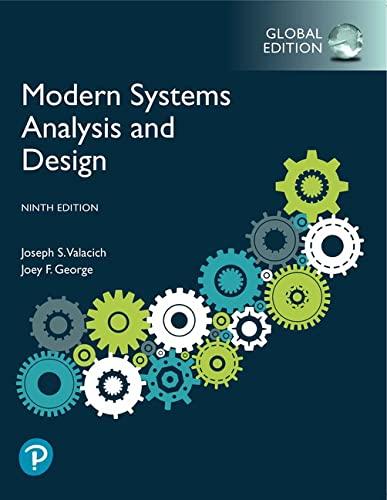Match each of the key terms above to the definition that best fits it. Field ____ A
Question:
Match each of the key terms above to the definition that best fits it.
Field
____ A named, two-dimensional table of data. Each relation consists of a set of named columns and an arbitrary number of unnamed rows.
____ A relation that contains a minimum amount of redundancy and allows users to insert, modify, and delete the rows without errors or inconsistencies.
____ The process of converting complex data structures into simple, stable data structures.
____ A particular relationship between two attributes.
____ A relation for which every nonprimary key attribute is functionally dependent on the whole primary key.
____ A relation that is in second normal form and that has no functional (transitive) dependencies between two (or more) nonprimary key attributes.
____ An attribute that appears as a nonprimary key attribute in one relation and as a primary key attribute (or part of a primary key) in another relation.
____ An integrity constraint specifying that the value (or existence) of an attribute in one relation depends on the value (or existence) of the same attribute in another relation.
____ A foreign key in a relation that references the primary key values of that same relation.
____ Two different names that are used for the same attribute.
____ A single attribute name that is used for two or more different attributes.
____ The smallest unit of named application data recognized by system software.
____ A coding scheme recognized by system software for representing organizational data.
____ A field that can be derived from other database fields.
____ A value a field will assume unless an explicit value is entered for that field.
____ A special field value, distinct from a zero, blank, or any other value, that indicates that the value for the field is missing or otherwise unknown.
____ A named set of rows and columns that specifies the fields in each row of the table.
____ The process of splitting or combining normalized relations into physical tables based on affinity of use of rows and fields.
____ A named set of table rows stored in a contiguous section of secondary memory.
____ A technique for physically arranging the records of a file.
____ A field of data that can be used to locate a related field or row of data.
____ The rows in the file are stored in sequence according to a primary key value.
____ The rows are stored either sequentially or nonsequentially, and an index is created that allows software to locate individual rows.
____ A table used to determine the location of rows in a file that satisfy some condition.
____ One or a combination of fields for which more than one row may have the same combination of values.
____ The address for each row is determined using an algorithm.
____ An attribute whose value is unique across all occurrences of a relation.
____ Data represented as a set of related tables or relations.
Step by Step Answer:

Modern Systems Analysis And Design
ISBN: 9781292351629
9th Global Edition
Authors: Joe Valacich, Joey George





